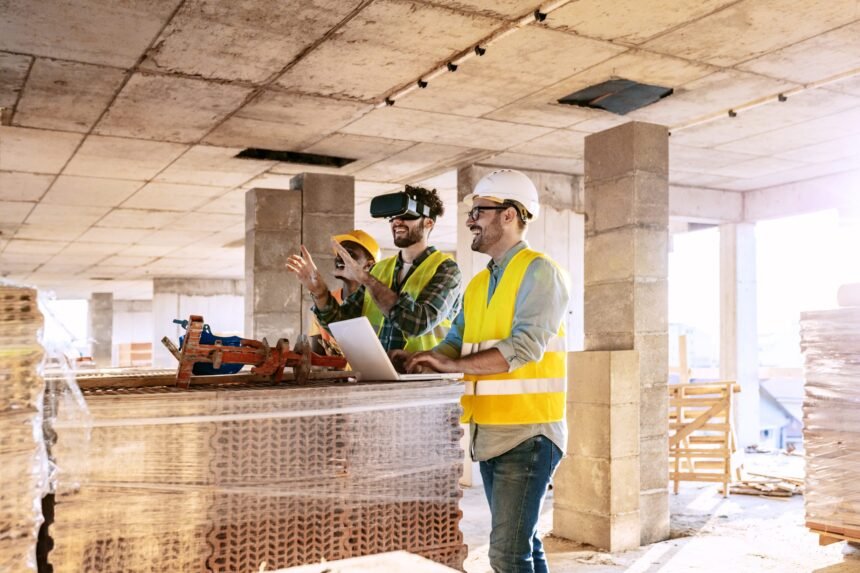From blueprints to backfills, the construction world is getting a serious tech makeover. Structural and geotechnical engineering fields, once dominated by manual calculations and conservative assumptions, are now embracing Artificial Intelligence to enhance design accuracy, speed, and safety.
- 10 cutting-edge AI-driven structural and geotech design platforms that are reshaping how the modern world is built.
- 1. Bentley Systems – PLAXIS with AI Modules
- 2. Autodesk Forma (formerly Spacemaker AI)
- 3. GeoStudio by Seequent (with Leapfrog AI integration)
- 4. AI-Supported RAM Structural System by Bentley
- 5. DeepEX – Deep Excavation Software with Predictive AI
- 6. Midjourney CivilGPT (Pilot Tool)
- 7. SoilVision AI (A Bentley Acquisition)
- 8. Trimble Tekla Structural Designer with AI Extensions
- 9. Rockscience RS2 with ML-Enhanced Analysis
- 10. GeoBIM.ai – Integrated AI for Geo + Structural Design
- AI Is Now Part of the Foundation
Today, AI isn’t just a buzzword; it’s an engineering partner. Whether it’s simulating complex soil behaviors or optimizing load-bearing structures, AI-driven platforms are helping engineers build better, faster, and smarter.
10 cutting-edge AI-driven structural and geotech design platforms that are reshaping how the modern world is built.
1. Bentley Systems – PLAXIS with AI Modules
PLAXIS, developed by Bentley Systems, is already a big name in geotechnical engineering. But what’s game-changing is its integration of AI to enhance soil-structure interaction simulations.
The AI features help predict soil failure modes, automate mesh generation, and analyze long-term settlement under variable loads, all with high accuracy and faster runtimes.
Why it matters: Engineers save hours of manual tweaking and get data-driven design suggestions.
2. Autodesk Forma (formerly Spacemaker AI)
Autodesk Forma isn’t just for architects; it plays a powerful role in early-stage structural planning. Its AI algorithms simulate environmental and structurals like terrain, foundation loads, and soil behavioral performance for urban developments, considering geotechnical construction.
Why it matters: Early design decisions get backed by AI-driven insights, saving massive rework costs later.
3. GeoStudio by Seequent (with Leapfrog AI integration)
GeoStudio is a go-to for geotech modeling, slope stability, seepage, stress-deformation, and more. Leapfrog AI integration uses machine learning to analyze subsurface data and refine geological models over time.
Why it matters: Reduces uncertainty in ground modeling and improves safety margins for critical infrastructure.
4. AI-Supported RAM Structural System by Bentley
RAM Structural System already handles structural load calculations and building analysis, but Bentley is now pushing AI tools into the mix. AI modules analyze past project data to suggest efficient structural layouts and detect design flaws early.
Why it matters: Engineers get intelligent design feedback before the first concrete pour.
5. DeepEX – Deep Excavation Software with Predictive AI
DeepEX specializes in excavation and shoring design. Its latest AI upgrades include predictive algorithms that evaluate soil-structure interaction and generate real-time feedback based on site-specific data.
Why it matters: Supports safer, faster design of deep foundations and retaining walls.
6. Midjourney CivilGPT (Pilot Tool)
Still in its early stages, CivilGPT by Midjourney is trained exclusively on civil and structural design standards. It provides AI-generated structural details, reinforcement suggestions, and load combinations for a range of structural systems.
Why it matters: A massive time-saver for early design drafts and code compliance checks.
7. SoilVision AI (A Bentley Acquisition)
SoilVision software now includes AI capabilities to refine soil behavior prediction models. Learning from existing soil test databases helps in modeling unsaturated soils and complex site conditions with higher precision.
Why it matters: Takes the guesswork out of nonlinear soil response and reduces over-design.
8. Trimble Tekla Structural Designer with AI Extensions
Tekla Structural Designer streamlines the entire analysis-to-drawing pipeline. With new AI extensions, the platform now suggests optimal member sizing and reinforcement configurations based on historical data and real-time stress mapping.
Why it matters: Boosts both structural performance and material savings.
9. Rockscience RS2 with ML-Enhanced Analysis
Rockscience’s RS2 is widely used for 2D geotechnical FEM analysis. With its new ML-enhanced engine, RS2 can now detect failure points in complex geological layers, reducing the need for overly conservative designs.
Why it matters: Smarter simulations lead to safer, cost-efficient tunnel and slope designs.
10. GeoBIM.ai – Integrated AI for Geo + Structural Design
A relatively new player, GeoBIM.ai integrates geotechnical data into Building Information Modeling workflows using AI. It bridges the gap between below-ground behavior and above-ground design, ensuring cohesive project planning.
Why it matters: Minimizes clash risks and unplanned cost escalations during execution.
AI Is Now Part of the Foundation
In structural and geotechnical design, precision is everything. A minor miscalculation in load paths or soil behavior can snowball into a disaster. These AI-driven platforms aren’t replacing engineers; they’re empowering them. They enhance decision-making, reduce redundancies, and enable more confident, data-backed designs.
As construction projects grow more complex and timelines shrink, AI is becoming not just a tool but a necessity. And if you’re still using Excel spreadsheets for your design calculations, it might be time to upgrade your toolbox.







